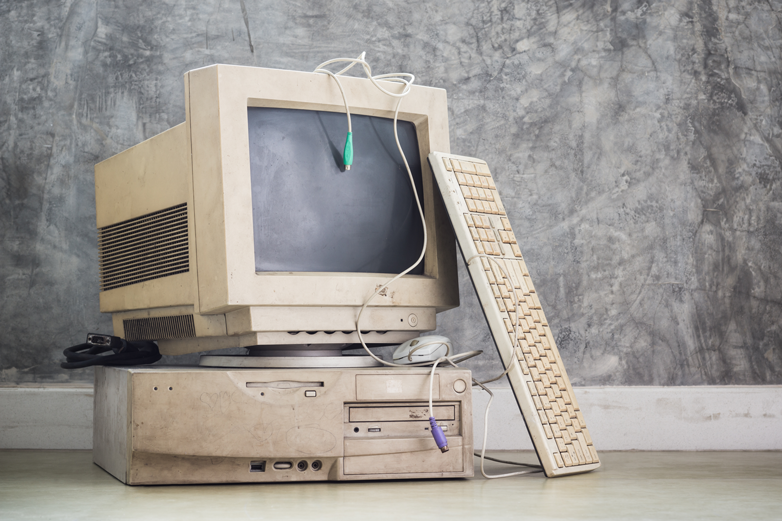Nowadays, it seems like everyone wants the newest and fastest computer, and who can blame them? Great specs, sleek designs, top speeds…what’s not to want? But before you go out and spend a fortune on the latest Mac or PC, let’s try to get your old computer up to speed!If you’ve recently turned on an old computer, you may notice that its a lot slower than you remember it. If you have a computer between 5 and 10 years old, you can do plenty of things to speed it up and make it feel new-ish! Today we will share tips on how to make an old computer faster.

Older Computers
So what makes a computer “old,” besides age? Well, technology has advanced significantly in the last ten years. Just think of the phones we have now compared to the phones we had ten years ago. Same brand, same model, but now we have 5G and 4K cameras on our phones.
The same goes for computers; newer computers have gotten smaller, sleeker, faster, and more compact over time.
There are pros and cons to the older computer models. Older computers also had less complicated programs and less software to deal with, so programs loaded quickly. However, they would not be able to run most of the programs that we know today.
Still, the overall computer experience has changed for the better.
Not to mention, newer computers are less expensive today (compared to brand new prices from 10 years ago), more powerful, and have way more features than ever before. RAM speeds, clock speeds, and processing power has grown significantly since the mid-2000s.
Does that mean your old computer is useless? Absolutely not. Once you learn how to make an old computer faster, you can still use it for daily computer activities such as work, email, browsing. If you are a gamer, upgrading an old computer may not be the best option for you unless you decide to rebuild the entire PC, but for now, let’s stick to things you can internally that won’t cost an arm and a leg.
Starting Up Your Old Computer
Before we start up your old computer, let’s take a look at the physical state of the PC. If it has been sitting in the basement collecting dust, it will need a physical cleaning. Although the speed of your PC is determined by hardware and specs, your PC runs more efficiently when all of its components are running smoothly, including any cooling fans.
A build-up of dust may actually slow down speeds because the PC cannot properly cool itself, which may put additional stress on the hardware. One of the best ways to clean the dust from your old PC is through a can of compressed air
Many other factors affect your old computer’s speed, and if it has not been turned on or updated, that could be one of them. Other factors that contribute to slow speeds include:
- Outdated OS (this most likely applies to your older computer)
- Outdated drivers
- Security issues (malware or viruses)
- Low disk drive space
- Low RAM space (Random access memory)
- Fragmented hard drive
- Unnecessary programs launched at start
- Unnecessary files or applications
How To Make An Old Computer Faster
- Delete Programs and Uninstall Old Software
Go through your old computer and remove software programs that you no longer use. If your computer is even close to 5 years old or more, chances are you may have unnecessary programs installed. You can do this manually or use an online PC cleaner. For comprehensive optimization of older computers, explore our PC optimizer solutions. - Cleanup Your Startup Programs
It doesn’t matter how old or new your PC is; one thing that will always contribute to slower speeds is startup programs. If you have too many programs trying to launch at startup, it can significantly slow down the process. Eliminating startup programs will depend on the OS running your older PC. - Update Operating System
If you are running an older version of Windows on your older computer, it may be time to upgrade to the latest version. Check to see if your PC is compatible with Windows 10 or newer. If it is, you may notice a significant difference in speed. If it is not compatible, it may help restore your PC to factory default, reinstall Windows, or even switch to Linux (a lighter OS that may be good for day-to-day computer functionality.) - Add More RAM
One of the more tricky ways to get your old computer running up to speed would be to add additional RAM. You may have to completely replace your PC’s memory system (this prevents compatibility issues or conflicts). - Check For Malware or Viruses
When it comes to older PCs, one of the biggest concerns is malware or viruses. People were not as careful with downloads as they are today. So chances are, you may have some malware on your old PC.
The best, easiest, and most effective way to handle viruses and remove them is through anti-virus software that identifies, cleans, and removes these files.








